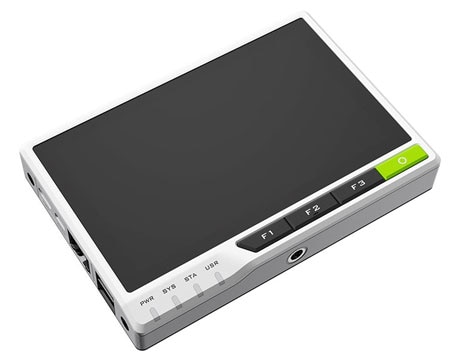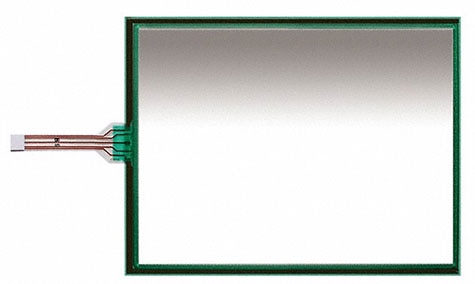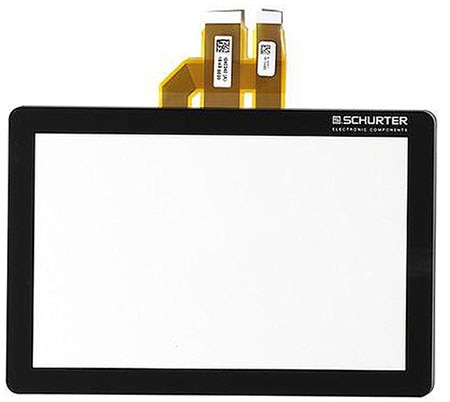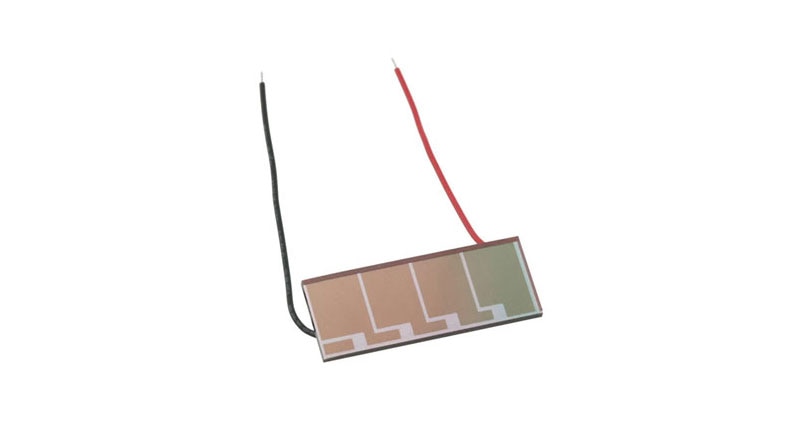Are Capacitive Touchscreens Overhyped for Industrial Environments?
Touchscreen technology has totally changed how human operators interact with complex machines in factories and industrial places.
Inspired by the precision and intuitive interfaces of smartphones and tablets, manufacturers have adopted capacitive touchscreens (Figure 1) to replicate that user-friendly experience on the factory floor. But can capacitive displays meet the demands of industrial settings?
 Figure 1: Seeed Studio reTerminal has a 5-inch IPS capacitive multi-touch screen with a resolution of 1280 x 720. (Image source: Seeed Studio)
Figure 1: Seeed Studio reTerminal has a 5-inch IPS capacitive multi-touch screen with a resolution of 1280 x 720. (Image source: Seeed Studio)
The disconnect between consumer design and industrial reality becomes evident when a factory floor operator wearing gloves taps on a capacitive touchscreen and nothing happens.
In situations where factory floor operators wearing gloves struggle to register their input, the consequences can be severe. These can range from workflow interruptions, delayed responses in mission-critical scenarios, to even potential safety risks in time-sensitive operations.
Capacitive interfaces also encounter issues with electromagnetic interference. In factory environments where electromagnetic noise is common, interference levels can cause issues of inconsistent responses and further reduce accuracy.
Although they offer better user interaction, they struggle in extreme operating conditions of moisture, chemical exposure, and temperature fluctuations, which raise concerns about their suitability in industrial applications.
Plus, in places such as food processing plants and manufacturing facilities, these screens are constantly exposed to rough conditions, which makes their inherent limitations even worse. Because of all these challenges, many industries are turning to a more robust and cost-efficient alternative.
A case for resistive touch
Resistive touchscreens (Figure 2) function by detecting pressure applied to the interface. The design consists of a flexible outer layer and a rigid inner layer, both coated with conductive material and separated by a thin gap filled with insulating spacers.
 Figure 2: NKK Switches resistive touchscreen has RS232 and USB communication interfaces. (Image source: NKK Switches)
Figure 2: NKK Switches resistive touchscreen has RS232 and USB communication interfaces. (Image source: NKK Switches)
This construction allows the two layers to make contact when pressure is applied, whether by a finger or a stylus, even when the operator is wearing gloves, thereby completing an electrical circuit. While resistive touchscreens offer decent accuracy, they do not provide the same level of precision as capacitive touchscreens.
For industrial settings, the resistive touchscreens show resilience against water, dust, and in some cases, chemicals. They are more cost-effective to manufacture than their capacitive counterparts, making them suitable for applications where large screens are required.
However, resistive touch comes with a trade-off. The limited precision and inability to support multi-touch gestures can limit its applicability in advanced interactive places. For applications that demand a rugged solution with both durability and higher accuracy, manufacturers are enhancing capacitive technology.
Ruggedized capacitive interfaces
Manufacturers are developing ruggedized projected capacitive (PCAP) touchscreens that combine the advantages of existing technologies with improved durability and resistance to external interference. These screens feature an insulating layer coated with a transparent conductor, which helps mitigate capacitive noise caused by electromagnetic interference.
Designed for tough conditions, rugged PCAP touchscreens (Figure 3) offer scratch resistance and maintain reliable performance even when exposed to dirt, dust, grease, and water. Their ability to recognize multiple touchpoints simultaneously makes them critical for dynamic applications that require multitouch input for machine control and data access.
 Figure 3: Schurter Incorporated touchkit with capacitive touchscreen has a wide operating temperature of -10°C to +70°C. (Image source: Schurter Incorporated)
Figure 3: Schurter Incorporated touchkit with capacitive touchscreen has a wide operating temperature of -10°C to +70°C. (Image source: Schurter Incorporated)
The upgraded optical performance ensures high transmissivity and clear visuals for its integration into panel PC and industrial displays.
Further adding to the robustness, PCAP touchscreens are designed to withstand a wide range of temperature variations. Therefore, they can be deployed in construction sites, outdoor remote installations, remote monitoring setups, and logistic operations.
Conclusion
The question of whether capacitive touchscreens are overhyped for industrial environments does not have a direct answer. The ideal choice between consumer-style multi-touch capacitive interfaces, low-cost resistive touchscreens, and more advanced PCAP depends on specific requirements of gloved operation, moisture, and chemical exposure.

Have questions or comments? Continue the conversation on TechForum, DigiKey's online community and technical resource.
Visit TechForum









